by Tomi Nagai-Rothe
en français ci-dessous / 以下日本語で
Introduction
Tomi Nagai-Rothe and Connie Borden, both Shintaido Instructors, are also active with HF Ito, Sarah Baker, Rob Gaston and many others in the Global Taimyo Community (GTC). GTC formed after September 11 in 2001 and re-formed on the 20 th anniversary in 2021. GTC believes that Taimyo Kata can function like a ritual form through which we can search and/or heal our inner world as well create better relationships with our outer world — including neighbors, community, and Nature.
This is the first of two articles written for the 2022 gatherings on the theme of Kintsugi (金継ぎ, “golden joinery”), also known as kintsukuroi (金繕い, “golden repair”). Mending is one way to transform objects and ourselves. Yet before we can mend or make amends, we need to feel the brokenness fully, be it a personal weakness or the violence of war. Deeply feeling the brokenness is a personal responsibility and a collective responsibility
that is painful and necessary.
These articles were written to help open conversations. Our hope is to create a brave space rather than a “safe space.” The keiko analogy would be a perspective-altering kirioroshi kumite as opposed to an enjoyable keiko where you leave the same way as you arrived. It’s not that we feel unsafe in an incredible kirioroshi kumite – quite the contrary – we feel so safe with our partner that we can open ourselves to them.
Please reflect and share your comments on these articles being shared with the Shintaido audience via Body Dialogue.
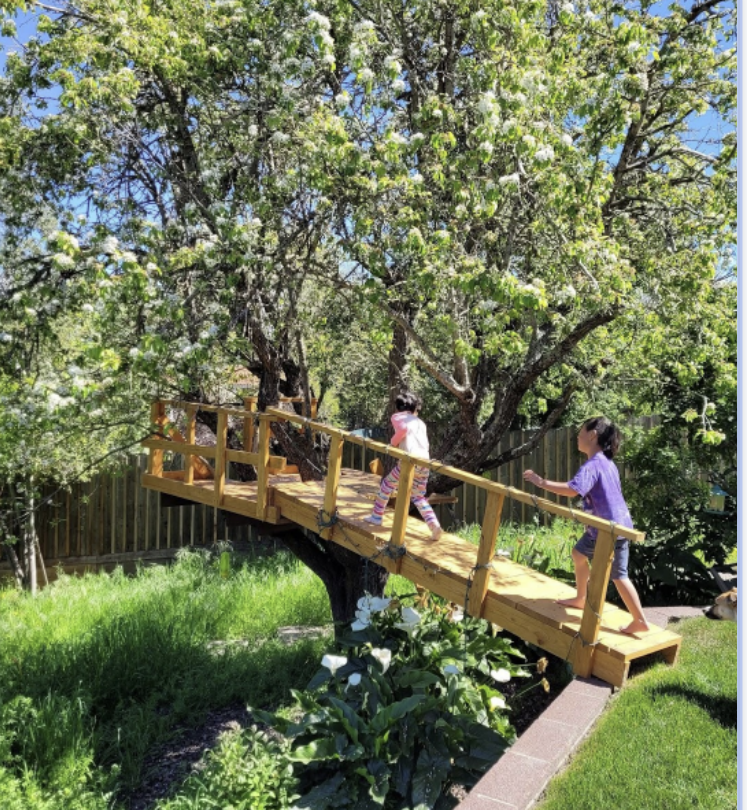
Preface
I spent the Covid period wondering how to bridge the gaps of physical and social separation — from differences in vaccination status and masking, to beliefs about climate change, to warfare in many parts of the world, to the war being waged against Black and Brown people on the streets of Turtle Island (the USA).
I am an activist by nature and have been working for positive change since age 12. Over the past two years I spent time co-organizing Black Lives Matter car caravans, examining my city’s decision to cut a position at the public library while the police department was asking for more than three times that amount in new patrol cars, and writing about the need to support our local indigenous tribe’s request that all settlers pay an honorary land tax to support the reclamation of their stolen land.
And yet, it felt like more was needed. Not more of the same, but activism on another level. I am not one to only pray and practice Taimyo, so I have started working with Ito’s practice of creating peace by being more peaceful, combined with the concept of radical self-responsibility. Though it is still very much a work in progress, I think of this as a form of spiritual activism. This article is my current thinking about using Taimyo and other tools for spiritual activism – in pursuit of peace.
My family defines peace as actively building connections among people, animals, and the natural world. We feel that those connections foster safety, healing, and growth. We host Peace Potlucks to bring together our community, and my extended family lives together in a place we call Pear Tree Village as an example of sustainable co-living and daily connection (our pear tree and tree house are pictured above).
In Shintaido and Life Exercise* , we similarly invest in creating deep connections (Ma 間 = space) with our partners and others with whom we are practicing. We value and foster these connections in and outside of the dojo, including via Zoom. Every evaluation and examination I’ve taken looked deeply into my connection with my partner and whether I affected them positively. As instructors, our goal is to create a unified experience through our gorei (instruction). The North Star** of our practice is trying to embody Ten-chi-jin-ware-ittai — the unification of ourselves, society, heaven and earth: the ultimate form of connection.
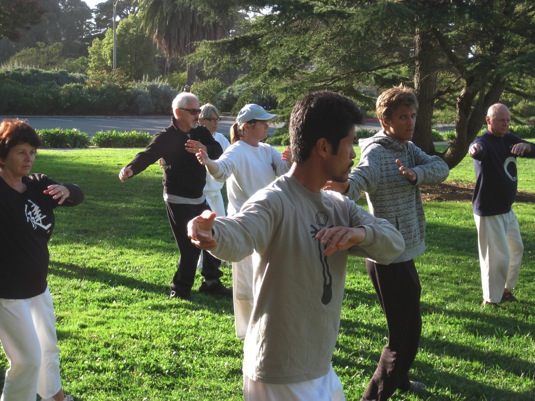
Taking this principle past the dojo and into our lives can be both intriguing and very challenging because our practice can’t just be about people we like or with whom we make easy connections. For example, I can’t go to keiko and decide who I will or won’t have as a kumite partner. I need to bow to the next person, whoever that is, and start building that kumite relationship immediately.
The importance of taking our practice beyond the dojo is illustrated in the five step process:
Nuke Nobi Kiki Sae Jizai
抜け 〜 伸び 〜 利き 〜 冴え 〜 自在
release expansion effectiveness clarity freedom
(my translation)
Ito explained that one way to understand this is through our practice:
Warm-ups Break out Kihon Kumite Our keiko and life outside the dojo
In the bigger world our keiko becomes real and hard when we understand the need to do kumite with people we dislike – or even fear and hate – if we want to create positive change in the world. When I say “do kumite” I mean, energetically and imaginatively interacting with them – not necessarily confronting them in real life. Even this imaginary encounter can be very difficult.
I believe this means using our practice to grow and attempt to get beyond the natural tendency to take sides, e.g. “I disagree with these people so they must be wrong.” There is much written about how divisive and violent public life has become – even to the point of warfare. So where do we, as articipants in the Global Taimyo Network, start if we really want to nudge the world toward reconnecting broken connections and peace?
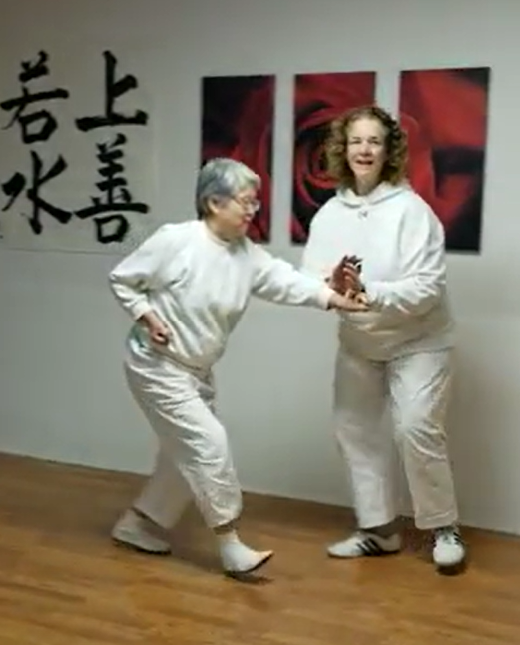
A great example from Shintaido is the sagari iirimi practice that Ito calls, “Welcome, this way please.” You can see it in this 7 second video. In the kumite we reach out as an opponent steps toward us, as if opening our front door. We open the door and draw them toward and beside us. Both of us end up facing the same direction: seeing the world from a similar vantage point. When Ito teaches this he makes the point that when we face one another we are looking in different directions, i.e. I am looking west while my partner is looking east. In contrast, taking the effort to see the same landscape from the same direction is, at the very least, a place to begin building understanding and connection.
My personal belief is that I first need to model this – to dig deep and do energetic kumite with those I really would rather avoid – if I want the world around me to change.
Jennifer McLean – teacher and international prayer leader – believes that holding a negative thought about someone can hold them in a negative pattern. Multiplied by thousands or millions of people it can become a real negative force. You may not believe this example, but in the Global Taimyo Community we practice the inverse – doing Taimyo Kata and holding people and the planet in peace. So couldn’t the same be true in the negative form?
I am really taken with the story of Dr. Hew Len and his work at the Hawaii State Hospital in the high security ward for the criminally insane. The staff and patient environment was extremely chaotic when he arrived.
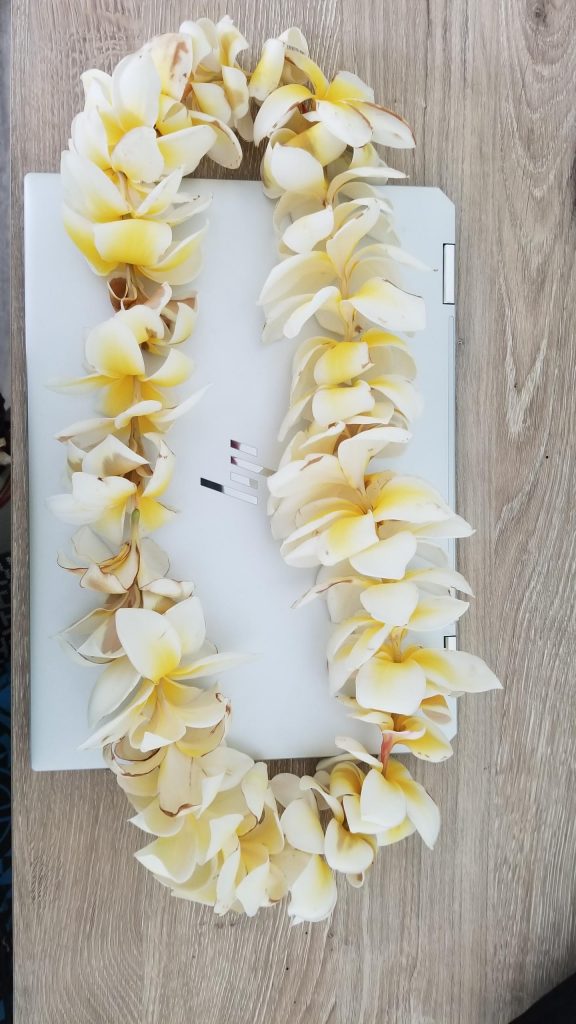
He spent four years at the hospital, full-time, occasionally reviewing patient files but mostly doing a continual Hawaiian Ho’oponono prayer. Almost all patients improved and were discharged and the staff dynamic improved greatly. The ward closed after four years due to lack of patients. Whether or not you believe this shift came about as a result of Dr. Len’s prayers, the idea of creating this type of change through the Global Taimyo Community is really intriguing to me.
If you are open to trying out this approach, I think there are several ways to practice this inward-outward reconnection:
- Imagine a person (or group of people) on a different “side” than you are. This could be a social, cultural or political issue or just someone you dislike or fear – living or dead. Hold them far from you at a safe distance and spend time being curious about their childhood and formative years, their hurts and fears, and their basic needs. How does this feel standing across from them in your imagination?
- For someone less threatening, imagine you are doing the “Welcome, this way please” kumite with them. What do you both see, facing the same direction? How does that feel?
- If either of these is too difficult, ask yourself, ” If I could do it, what might it feel like?”
Jennifer McLean has shared an adaptation of the traditional Hawaiian Ho’oponono reconciliation and forgiveness process*** in the form of a guide prayer/meditation. It is a healing approach that simultaneously addresses those we fear or hate, and the unacknowledged parts of ourselves that those people trigger. It is a longer version of what I have outlined above. You have probably encountered other forms of prayer, meditation and healing that function in this way.
Regardless of the approach, I think all of them require grounding in one’s own safe space with support from friends and family. Pear Tree Village is one source of support for me to do this connection work, along with spiritual friends in the Friends (Quaker) community. For Buddhists this community is found in the sangha, for churchgoers it is the fellowship. Whether you follow a faith tradition or find your grounding in Shintaido, my hope is that we can support one another in the Global Taimyo Community as we follow the path of peace together.
* A term created by Lee Seaman and H.F. Ito to describe the combination of Yokikei Shintaido – including Taimyo Kata – and Tai Chi
that Ito uses in his teaching.
** North Star – Many non-governmental organizations and individuals in Turtle Island (USA) use this term to indicate their ultimate destination and vision. It comes from the work of abolitionist Harriet Tubman who led enslaved people to freedom, traveling at night and navigating by the light of the North Star.
*** Listen to the adapted Ho’oponono prayer here in full: https://www.annualprayercircle.com/pc-listening-salon-2022
Scroll down to March 2022 (1:24:40-1:00:04 on the countdown timer – 24.5 minutes).
Radical self-responsibility
https://www.onewithnow.com/radical-responsibility/
Spiritual activism https://en.wikipedia.org/wiki/Spiritual_activism#:~:text=Spiritual%20activism%20is%20a%20practice,the%20material%20or%20physical%20world
7 second video
https://www.youtube.com/watch?v=E9ioXFcB6iA
Annual prayer circle
https://www.annualprayercircle.com/pc-listening-salon-2022
Français
Préface
J’ai passé la période du Covid à me demander comment combler les écarts de séparation physique et sociale des différences de statut vaccinal et de masquage aux croyances sur le changement climatique, en passant par les guerres dans de nombreuses régions du monde et la guerre menée contre les Noirs et les Marrons dans les rues de Turtle Island (États-Unis).
Je suis un activiste par nature et je travaille pour un changement positif depuis l’âge de 12 ans. Au cours des deux dernières années, j’ai passé du temps à coorganiser des caravanes Black Lives Matter, à examiner la décision de ma ville de supprimer un poste à la bibliothèque publique alors que le service de police demandait plus de trois fois ce montant pour de nouvelles voitures de patrouille, et à écrire sur la nécessité de soutenir la demande de notre tribu indigène locale, qui souhaite que tous les colons paient une taxe foncière honoraire pour soutenir la récupération de leurs terres volées.
Et pourtant, j’avais l’impression qu’il fallait faire plus. Pas plus de la même chose, mais de l’activisme à un autre niveau. Je ne suis pas de ceux qui se contentent de prier et de pratiquer le Taimyo, j’ai donc commencé à trravailler avec la pratique d’Ito qui consiste à créer la paix en étant plus pacifique, combinée au concept d’auto-responsabilité radicale. Bien que ce soit encore un travail en cours, je considère cela comme une forme d’activisme spirituel. Cet article présente mes réflexions actuelles sur l’utilisation du Taimyo et d’autres outils d’activisme spirituel – dans la poursuite de la paix.
Ma famille définit la paix comme la création active de liens entre les personnes, les animaux et le monde naturel. Nous pensons que ces liens favorisent la sécurité, la guérison et la croissance. Nous organisons des “Peace Potlucks” pour rassembler notre communauté et ma famille élargie vit ensemble dans un endroit que nous appelons le “Pear Tree Village” (village des poiriers), un exemple de coexistence durable et de connexion quotidienne (notre poirier et notre cabane dans les arbres sont illustrés ci-dessus).
Dans le Shintaido et les exercices de vie, nous investissons de la même manière dans la création de connexions profondes (Ma 間 = espace) avec nos partenaires et les autres personnes avec lesquelles nous pratiquons. Nous valorisons et encourageons ces connexions à l’intérieur et à l’extérieur du dojo, y compris via Zoom. Toutes les évaluations et tous les examens que j’ai passés ont examiné en profondeur ma connexion avec mon partenaire et ont cherché à savoir si j’avais un effet positif sur lui. En tant qu’instructeurs, notre objectif est de créer une expérience unifiée à travers notre gorei (enseignement). L’étoile polaire de notre pratique consiste à essayer d’incarner le Ten-chi-jin-ware-ittai – l’unification de nous-mêmes, de la société, du ciel et de la terre : la forme ultime de connexion.
Transposer ce principe au-delà du dojo et dans nos vies peut être à la fois fascinant et très difficile, car notre pratique ne peut pas se limiter aux personnes que nous aimons ou avec lesquelles nous établissons facilement des liens. Par exemple, je ne peux pas aller au keiko et décider qui sera ou ne sera pas mon partenaire de kumite. Je dois m’incliner devant la personne suivante, quelle qu’elle soit, et commencer immédiatement à construire cette relation de kumité.
L’importance d’amener notre pratique au-delà du dojo est illustrée par le processus en cinq étapes:
Nuke Nobi Kiki Sae Jizai
抜け 〜 伸び 〜 利き 〜 冴え 〜 自在
libération expansion efficacité clarté liberté
(ma traduction)
Ito a expliqué que l’une des façons de comprendre cela est à travers notre pratique:
Échauffements Break out Kihon Kumite Notre keiko et la vie en dehors du dojo.
Dans le grand monde, notre keiko devient réel et difficile lorsque nous comprenons la nécessité de faire du kumite avec des personnes que nous n’aimons pas – ou même que nous craignons et détestons – si nous voulons créer un changement positif dans le monde. Quand je dis “faire du kumite”, je veux dire interagir énergétiquement et imaginairement avec eux – sans nécessairement les affronter dans la vie réelle. Même cette rencontre imaginaire peut être très difficile.
Je crois que cela signifie utiliser notre pratique pour grandir et tenter de dépasser la tendance naturelle à prendre parti, par exemple : “Je ne suis pas d’accord avec ces gens, donc ils doivent avoir tort.” Il y a beaucoup d’écrits sur la façon dont la vie publique est devenue divisée et violente – jusqu’à la guerre. Alors, par où commençons-nous, en tant que participants au Réseau Global Taimyo, si nous voulons vraiment pousser le monde vers la reconnexion des liens brisés et la paix ?
Un excellent exemple tiré du Shintaido est la pratique sagari iirimi qu’Ito appelle “Bienvenue, par ici s’il vous plaît”. Vous pouvez le voir dans cette vidéo de 7 secondes. Dans le kumite, nous tendons la main lorsqu’un adversaire s’avance vers nous, comme si nous ouvrions notre porte d’entrée. Nous ouvrons la porte et l’attirons vers nous et à côté de nous. Nous finissons tous les deux par faire face à la même direction : nous
voyons le monde depuis un point de vue similaire. Lorsque Ito enseigne cette technique, il souligne que lorsque nous nous faisons face, nous regardons dans des directions différentes, c’est-à-dire que je regarde
vers l’ouest et que mon partenaire regarde vers l’est. En revanche, faire l’effort de voir le même paysage depuis la même direction est, à tout le moins, un point de départ pour la compréhension et la connexion.
Ma conviction personnelle est que je dois d’abord modeler cela – creuser profondément et faire du kumite énergétique avec ceux que je préférerais vraiment éviter – si je veux que le modèle de l’art du kumite se développe.
Jennifer McLean – enseignante et chef de file international de la prière – pense que le fait d’avoir une pensée négative sur quelqu’un peut le maintenir dans un schéma négatif. Multipliée par des milliers ou des
millions de personnes, elle peut devenir une véritable force négative. Vous ne croyez peut-être pas à cet exemple, mais dans la Communauté mondiale Taimyo, nous pratiquons l’inverse – faire le Taimyo Kata et maintenir les gens et la planète en paix. Ne pourrait-il pas en être de même pour la forme négative ?
Je suis très impressionné par l’histoire du Dr Hew Len et son travail à l’Hôpital d’Etat d’Hawaï dans le service de haute sécurité pour les fous criminels. L’environnement du personnel et des patients était extrêmement
chaotique à son arrivée.
Il a passé quatre ans à l’hôpital, à plein temps, examinant occasionnellement les dossiers des patients mais faisant surtout une prière hawaïenne Ho’oponono continuelle. Presque tous les patients se sont améliorés et sont sortis de l’hôpital, et la dynamique du personnel s’est grandement améliorée. Le service a fermé au bout de quatre ans par manque de patients. Que vous croyiez ou non que ce changement soit le résultat des prières du Dr Len, l’idée de créer ce type de changement à travers la Communauté Globale Taimyo m’intrigue vraiment.
Si vous êtes ouvert à l’idée d’essayer cette approche, je pense qu’il y a plusieurs façons de pratiquer cette reconnexion intérieur-extérieur :
1) Imaginez une personne (ou un groupe de personnes) d’un “côté” différent du vôtre. Il peut s’agir d’un problème social, culturel ou politique ou simplement d’une personne que vous n’aimez pas ou craignez – vivante ou morte. Tenez-la à une distance sûre de vous et passez du temps à être curieux de son enfance et de ses années de formation, de ses blessures et de ses peurs, et de ses besoins fondamentaux. Que ressentez-vous en vous tenant en face d’elle dans votre imagination ?
2) Pour une personne moins menaçante, imaginez que vous faites le kumite “Bienvenue, par ici s’il vous plaît” avec elle. Que voyez-vous tous les deux, face à la même direction ? Comment vous sentez-vous ?
3) Si l’une ou l’autre de ces situations est trop difficile, demandez-vous : ” Si je pouvais le faire, qu’est-ce que cela pourrait me faire ? “.
Jennifer McLean a partagé une adaptation du processus traditionnel hawaïen Ho’oponono de réconciliation et de pardon sous la forme d’une prière/méditation guide. Il s’agit d’une approche de guérison qui s’adresse
simultanément à ceux que nous craignons ou détestons, et aux parties non reconnues de nous-mêmes que ces personnes déclenchent. Il s’agit d’une version plus longue de ce que j’ai décrit ci-dessus. Vous avez probablement rencontré d’autres formes de prière, de méditation et de guérison qui fonctionnent de cette manière.
Quelle que soit l’approche, je pense qu’elles nécessitent toutes de s’ancrer dans son propre espace de sécurité avec le soutien de ses amis et de sa famille. Le village de Pear Tree est une source de soutien qui me permet de faire ce travail de connexion, ainsi que des amis spirituels de la communauté des Amis (Quakers). Pour les bouddhistes, cette communauté se trouve dans la sangha, et pour les pratiquants de l’église, dans la fraternité. Que vous suiviez une tradition religieuse ou que vous trouviez votre fondement dans le Shintaido, mon espoir est que nous puissions nous soutenir mutuellement dans la Communauté mondiale Taimyo, alors que nous suivons ensemble le chemin de la paix.
壊れているものを再び繋ぐ
トミ・ナガイ=ローテ
序文
予防接種の有無やマスクの違い、気候変動に対する考え方、世界各地での戦争、タートルアイランド(アメリカ)の路 上で黒人や褐色人種に対して行われている戦争など、物理的・社会的な隔たりをどう埋めるか、私はコビット期を過
ごしました。
私は生来活動家であり、12歳のときからポジティブな変化を求めて活動してきました。この2年間は、Black Lives Matterのキャラバンを共同開催したり、警察署がその3倍以上の新しいパトカーを要求しているのに、公立図書館の 職員を削減するという私の市の決定を検討したり、地元の先住民族が、すべての入植者に名誉土地税を払って、奪 われた土地の再生を支援するよう求めていることについて書いたりしていた。
それでも、もっと必要なことがあるように感じました。同じことを繰り返すのではなく、別の次元での活動です。私はた だ祈りや太極拳の練習をする人間ではないので、より平和であることによって平和を作り出すという伊藤の練習と、 過激な自己責任という概念を組み合わせて取り組み始めました。まだまだ未熟な私ですが、これは精神的な活動だ と考えています。この記事は、平和を追求するための精神的活動として、太虚やその他のツールを使用することに ついての私の現在の考えである。
私の家族は、平和とは人間や動物、自然界とのつながりを積極的に築くことだと定義している。そうしたつながりが 安全や癒し、成長を促すと信じているからだ。私たちは地域社会をまとめるためにピース・ポットラックを開催し、大 家族は持続可能な共同生活と日々のつながりの例として、「梨の木村」と呼ぶ場所で一緒に暮らしています(上の写 真は梨の木と木の家です)。
新体道やライフエクササイズでも、パートナーや一緒に練習する人たちと深いつながり(間合い)を作ることに投資し ています。道場の中でも外でも、Zoomを使ってでも、こうしたつながりを大切にし、育てていきます。私が受けたすべ
ての評価や審査では、パートナーとのつながり、そして私がパートナーにポジティブな影響を与えたかどうかを深く見 ています。私たち指導者の目標は、御霊(ごりょう)を通して一体感を生み出すことです。稽古の北極星は、天地人和
合体、つまり自分自身と社会、天と地が一体となった究極のつながりを体現しようとすることです。
この原則を道場から生活の中に取り入れることは、興味深いことであると同時に、非常に困難なことでもあります。例えば、稽古場に行って、組手相手として誰を選ぶか、選ばないかを決めることはできない。次の人に頭を下げて、すぐに組手関係を構築する必要があります。
道場の外に出て稽古をすることの大切さが、この5つのステップに表れている。
ぬけのび ききさえ じざい
抜け 伸び 利き 冴え 自在
解放 伸び 効果 明確 自由
伊藤は、このことを理解する一つの方法は、私たちの練習を通してであると説明した。防寒対策 脱力系組手 私たちの稽古と道場の外での生活
大きな世界では、私たちの稽古は、世界に肯定的な変化をもたらしたいなら、嫌いな人、あるいは恐怖や憎しみのある人とも組手をする必要があることを理解したとき、現実的で厳しいものになるのである。私が「組手をする」と言ったのは、精力的に、想像力を働かせて相手と接するという意味であり、必ずしも現実に相手と対峙する必要はない。この想像上の出会いでさえ、とても難しいことなのです。
このことは、「私はこの人たちと意見が違うから、この人たちは間違っているに違いない」というような、どちらかの側 に立ってしまう自然な傾向を超えて、成長するために稽古をすることを意味すると私は考えています。公共の場がい
かに分裂的で暴力的になっているか、戦争にさえなっているかについては、多くのことが書かれています。では、グ ローバルタイミョーネットワークに参加する私たちは、壊れたつながりをつなぎ直し、世界を平和に導くために、何か ら始めればいいのでしょうか。
新体道の素晴らしい例として、伊藤が “ようこそ、こちらへ “と呼んでいるサガリ・イリミの稽古があります。この7秒間 のビデオで見ることができます。組手では、相手がこちらに歩み寄ってきたときに、玄関のドアを開けるように手を伸
ばします。ドアを開け、相手をこちらに引き寄せ、横に置く。お互いに同じ方向を向き、同じような視点から世界を見 ることができるのである。伊藤は、「向かい合うと、自分は西を、相手は東を向いていることになる」と指摘する。それ
に対して、同じ風景を同じ方向から見ようとする努力は、少なくとも理解とつながりを築くための出発点となるもので す。
私の個人的な信念は、私の周りの世界を変えたいのであれば、まず私がそのモデルになること、つまり、本当は避 けたい相手と深く掘り下げて精力的に組手をすることが必要だということです。
ジェニファー・マクリーン(教師、国際的な祈りの指導者)は、誰かについて否定的な考えを持ち続けると、その人を 否定的なパターンに閉じ込めてしまうと信じています。それが何千人、何百万人という人たちに伝わると、本当の意 味で負の力になるのです。この例は信じられないかもしれませんが、世界の太極拳コミュニティでは、太極拳の型を 行い、人々や地球を平和に保つという逆のことを実践しているのです。ですから、ネガティブな形でも同じことが言え るのではないでしょうか?
私は、ヒュー・レン博士がハワイ州立病院の精神異常犯罪者用高セキュリティ病棟で働いていた時の話をとても気 に入っています。博士が着任した当時は、スタッフも患者も非常に混沌とした環境でした。
彼はこの病院で4年間フルタイムで働き、時には患者のファイルを見たりもしたが、ほとんどはハワイのホ・オポノノ の祈りを継続的に行っていた。ほとんどすべての患者が改善されて退院し、スタッフの行動力も大きく改善されまし た。病棟は4年後、患者不足のため閉鎖された。レン博士の祈りがこのような変化をもたらしたと信じるかどうかは別 として、グローバルタイミョーコミュニティを通じてこのような変化を生み出すという考え方は、私にとって実に興味深
いものである。
もし、あなたがこの方法を試してみたいなら、この「内と外のつながり」を実践する方法がいくつかあると思います。自分とは違う「側」にいる人(またはグループ)を想像してください。これは社会的、文化的、政治的な問題かもしれま
せんし、単にあなたが嫌いな人、恐れている人(生きているか死んでいるかは問いません)かもしれません。その人を安全な距離で遠くに抱きかかえ、その人の子供時代や形成期、傷や恐怖、基本的なニーズについて好奇心をもって過ごしてください。あなたの想像の中で、その人の向かいに立つと、どのように感じますか?あまり脅威を感じない相手には、「いらっしゃいませ、こちらへどうぞ」の組手を一緒にしていると想像してください。同じ方向を向いているあなたには何が見えますか?それはどのように感じますか?どちらかが難しければ、「もし、それができたら、どんな感じだろう」と自分に問いかけてみてください。
ジェニファー・マクリーンは、伝統的なハワイのホ・オポノノの和解と許しのプロセスを、ガイドの祈り/瞑想の形にアレンジしたものを共有しています。これは、私たちが恐れたり憎んだりしている人たちと、その人たちが引き金となって
いる自分自身の無意識の部分に同時に取り組む癒しのアプローチなのです。これは、私が上に概要を述べたものの、より長いバージョンです。このように機能する他の祈りや瞑想、癒しの形態に出会ったことがあるのではないでしょうか。
どのようなアプローチであっても、友人や家族のサポートを受けながら、自分自身の安全な空間でグラウンディングすることが必要だと思います。梨の木村は、フレンズ(クエーカー)コミュニティのスピリチュアルな友人たちとともに、
私がこのコネクションワークを行うためのひとつの支援源となっています。仏教徒にとってはサンガ、教会に通う人々にとってはフェローシップがこのコミュニティです。あなたが信仰の伝統に従っているか、新体道に基盤を置いているかにかかわらず、平和の道を共に歩むために、グローバル大名コミュニティの中で互いに支え合うことができればと願っています。

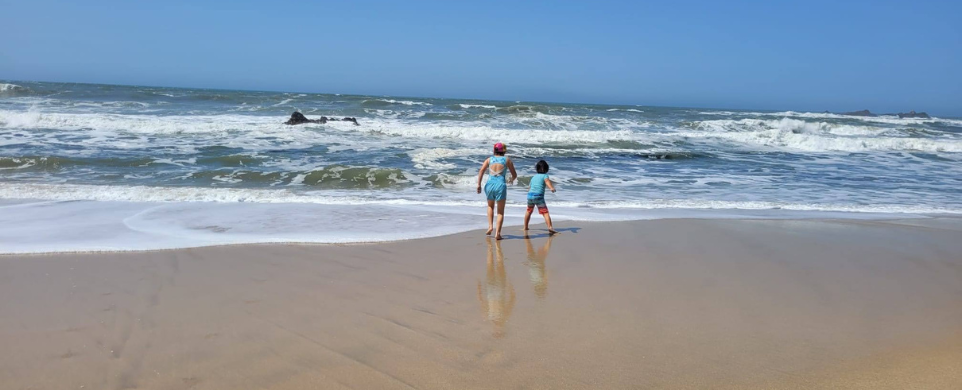


Thank you Tomi for writing this. I am taken with the idea of creating a brave space rather than a safe space.
Thank you for this article Tomi. Although 3,000 miles apart and have only met a few times, I feel we may be kindred spirits. Well, I guess we are the only Quakers doing Shintaido, in U.S. anyway.
Perhaps this approach to kumite is getting at the core of nonviolence theory/ practice, where “Winning” is not about overcoming the adversary, but transforming them into a collaborator.
But I do have a different view on one point- what the “Spiritual Activism” article calls “ real success”. That could be a dangerous goalpost. Trappist monk and activist Thomas Merton warned about this ephemera. “Do not depend on the hope of results. You may have to face the fact that your work will be apparently worthless…As you get used to this idea, you start more and more to concentrate not on the results, but on the value, the rightness, the truth of the work itself. You gradually struggle less and less for an idea, and more and more for specific people.” Merton understood that ends and means are inseparable. Matt Shorten